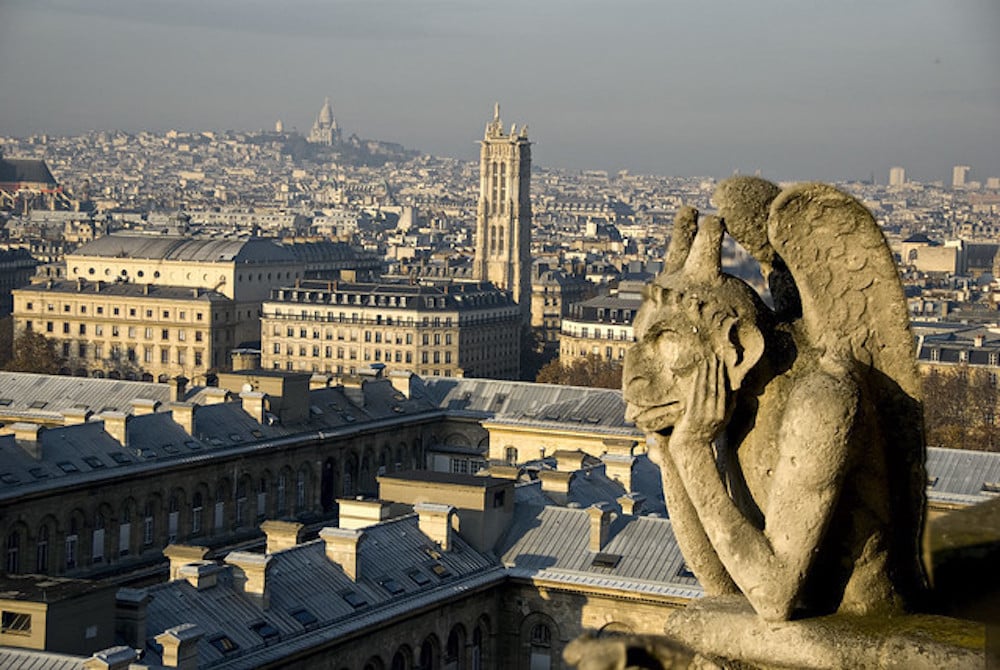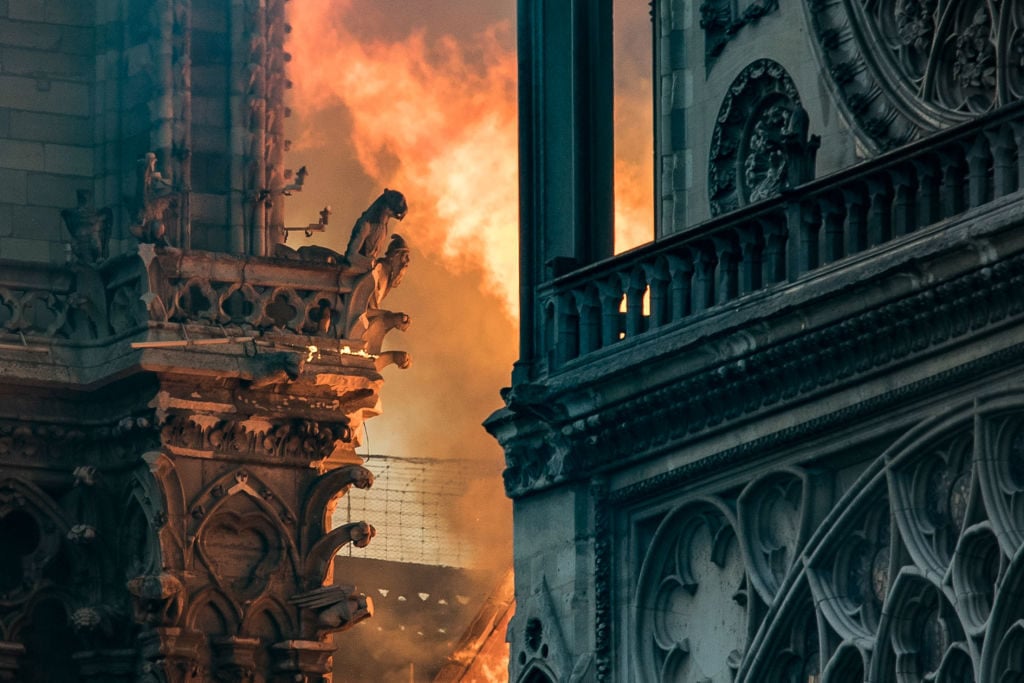Art World
A Dutch Company Has a Plan to Rebuild Notre Dame From the Ashes—Literally—Using 3-D Printing
Two designers suggest that the charred remains of the cathedral can be reused for its restoration.

Two designers suggest that the charred remains of the cathedral can be reused for its restoration.

Eileen Kinsella

Cutting-edge technology may play an unprecedented role in the reconstruction of Notre Dame Cathedral after last week’s devastating fire.
A Dutch design firm, Conc3rde, has proposed 3-D printing lost sections of the famous Gothic church—and even using ashes from the fire as a material.
“As the extent of the damage becomes clear, it is time to think about how to rebuild this sacred monument that has seen so much history,” according to a written proposal from Conc3rde co-founders Eric Geboers and Matteo Baldassari.
Now that President Emmanuel Macron has pledged to fully restore the church, and close to €1 billion ($1.1 billion) have been pledged, Geboers and Baldassari are proposing a strategy “to rebuild Notre Dame in a modern way, that maintains the soul and layered history of the building.”
The three-year old Rotterdam-based firm has already produced a sample replacement gargoyle using the technique is has proposed. Using scans of the gargoyle that were readily available online, they created Le Styrge, a demon statue that sat on the roof of Notre Dame, with a small printer known as Armadillo White. The sculpture has been remade in a mixture of limestone and ash, materials similar to those left by the fire.

Flames and smoke billow around the gargoyles decorating the roof and sides of the Notre-Dame Cathedral in Paris on April 15, 2019. Photo by Thomas Sansom/AFP/Getty Images.
“What if we reuse what is left? What if we take the remains of Notre Dame and use them to build her up again? What if we take the stone that has seen so much history and not simply discard it but reuse it, and with that maintain the soul of the building?” they ask in their proposal.
They propose to collect the ash, dust, and damaged stone, and turn these materials into a 3-D printable powder. “The powder will have the color of the Parisian stone yellowish grey, mixed with the charred remains of the wood. We can then use this powder, together with the existing 3-D scans, and directly 3-D print the lost parts of the Notre Dame.”
Le Styrge was added to the roof of Notre Dame during a 19th-century restoration by architect Eugène Viollet-le-Duc. The material that was originally used to build the cathedral, known as Lutetian limestone, came from mines that are now buried under Paris. And the large oak beams of the timber roof that was destroyed last week were made from trees felled in the 13th century, according to a report in Dezeen.
“We would like the Notre Dame to rise from its ashes like a phoenix,” Geobers and Baldassari write. “The fire is now part of its long history. The building should show its layered history proudly, and show the world that it has conquered it. The fire can also be the future of Notre Dame.”
In the wake of the disastrous fire, another unorthodox idea making the rounds is the notion that models made for the 2014 video game “Assassin’s Creed Unity,” which is set in Paris during the French Revolution, could prove useful to conservationists. The game’s artist, Caroline Miousse, spent more than a year making a detailed recreation of the cathedral.